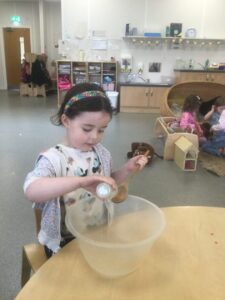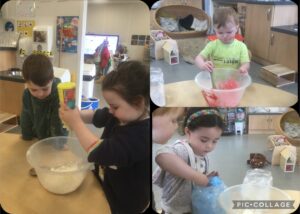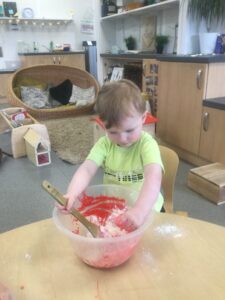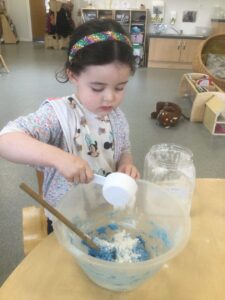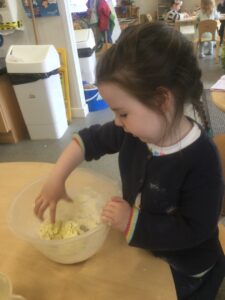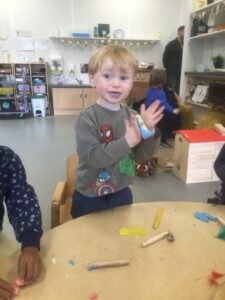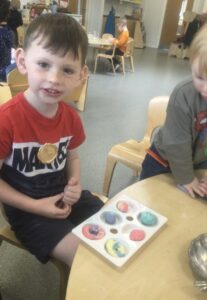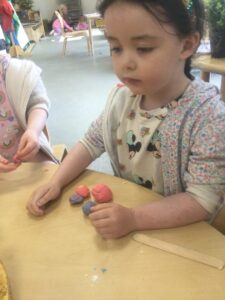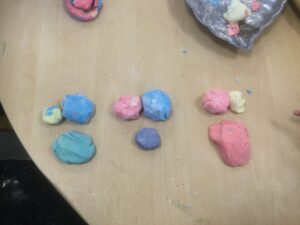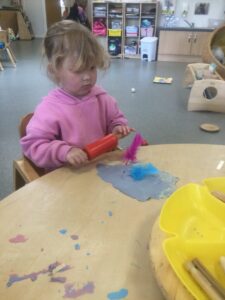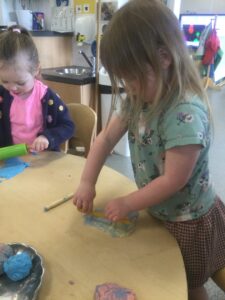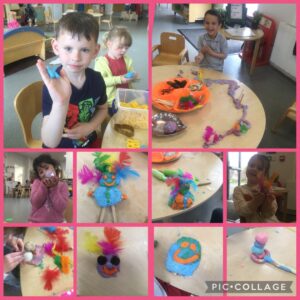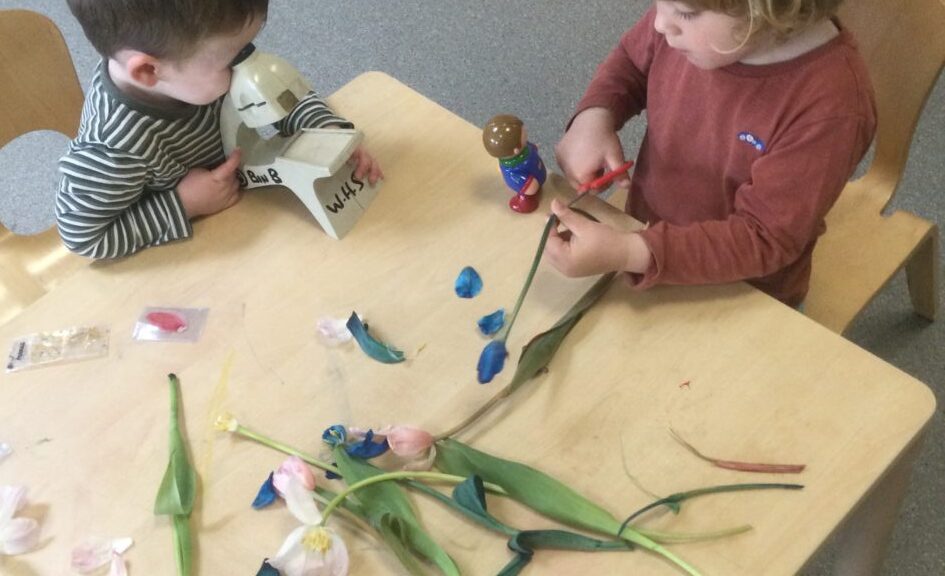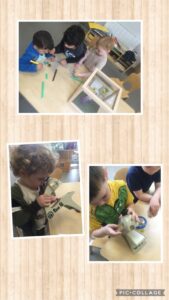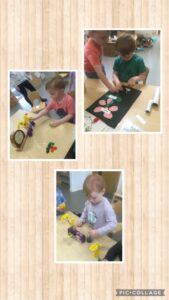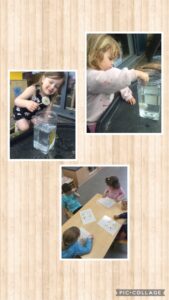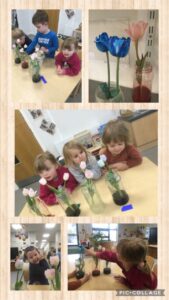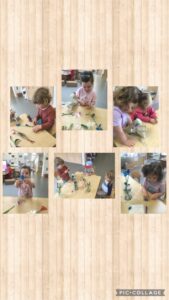We have been learning how to make playdough all by ourselves. The playdough area is a self-serve area designed to promote the independent skills of all our children.
We have been selecting our ingredients and we are learning about the different quantities of these ingredients that we will we need for our recipe. (Following on from the new government guidelines we have been using heat treated gluten free flour in our recipe).
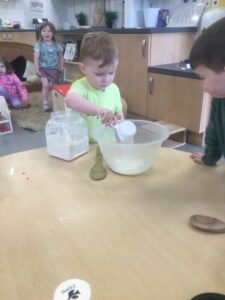
All our children aged 2-5 have the opportunity to make their own playdough and enjoy doing so independently.
This week in our Playdough area we have been exploring and experimenting with colour mixing.
First we made our playdough, by each collecting the bowl, spoon and ingredients we needed. We each choose a primary colour to make our playdough to start with. We had red, yellow and blue.
We were able to see if our playdough was ready, by testing if it was too dry and needed more water or too wet and needed more flour.
”it’s ready”
Once our playdough was perfect we set up our playdough station and invited our friends to come and join us.
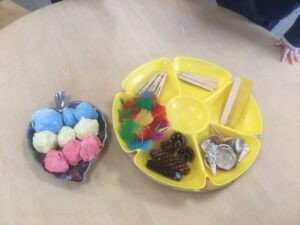
We each took a pinch of two or more colours and mixed them together to see what colours we could make.
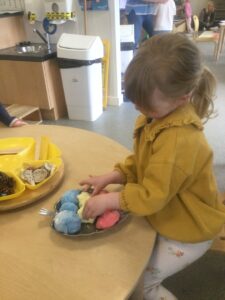
We used our gross motor skills as we rolled the playdough together to mix up the colours.
We were amazed at the colours we were able to make.
“I’ve made so many”
“I’ve made pink and purple and orange”
We discovered that we got green by mixing red and yellow. Purple by mixing the red and blue. And a pinky orange if we mixed red and yellow. We even ended up with a rainbow playdough mix.
Once we made all our new colours we got to work creating playdough masterpieces using the loose parts.

“I made a unicorn”
“A birthday cake, blow out your candles”
We also used a variety of different tools to help us mould our playdough such as scissors
rolling pins
and even used the loose parts to make patterns
We have been so busy at our playdough station. I wonder what we will make tomorrow.
Here is some of our playdough creations so far….
Article 29 – I have the right to an education which develops my personality.


